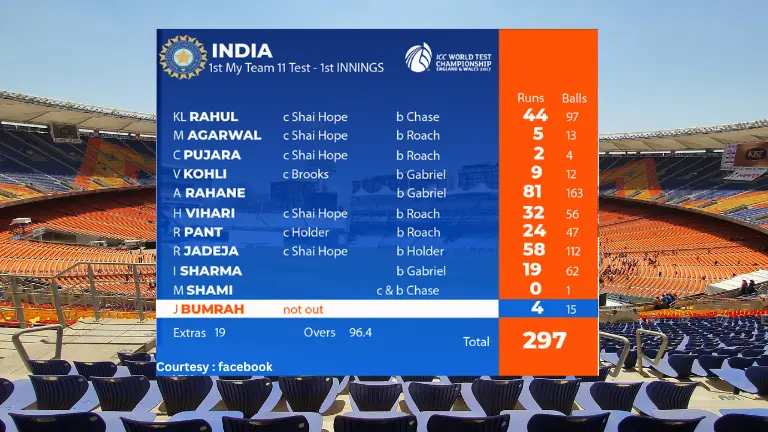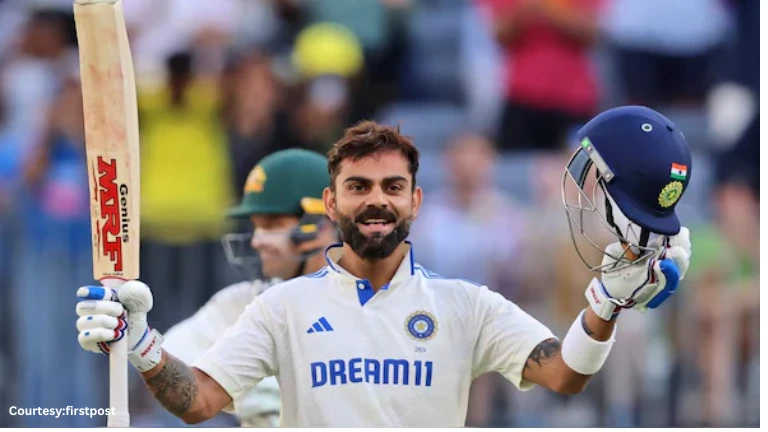If you’re new to cricket, understanding cricket scorecards can feel like decoding a mystery. But once you know what all those numbers and abbreviations mean, you’ll follow matches with confidence and enjoy the game more. This step-by-step guide is perfect for beginners who want to learn how to read a cricket scorecard with easy examples and clear explanations.
Table of Contents
Step 1: Cricket Scorecard Format Explained
A typical cricket scorecard shows a team’s score as:
Runs/Wickets (Overs)
For example:154/5 (17.2) means:
- The team has scored 154 runs
- They have lost 5 wickets (5 players out)
- They have played 17 overs and 2 balls
Knowing this simple format helps you understand what cricket scores mean at a glance.
Step 2: How to Interpret Cricket Batting Stats
Beneath the team total, you’ll see a list of batsmen and their stats. For example:
| Batsman | Runs | Balls | 4s | 6s | Strike Rate (SR) |
|---|---|---|---|---|---|
| Rohit Sharma | 45 | 32 | 6 | 1 | 140.62 |
| Virat Kohli | 30 | 25 | 3 | 0 | 120.00 |
- Runs: Runs scored by the batsman
- Balls: Number of balls faced
- 4s/6s: Boundaries hit (4 runs or 6 runs)
- Strike Rate: Runs scored per 100 balls (shows how fast they scored)
This helps you interpret cricket batting stats to see who scored quickly or steadily.
Step 3: Understanding Bowling Stats on a Scorecard
Next, look at the bowling section. It shows how bowlers performed, for example:
| Bowler | Overs | Runs Given | Wickets | Economy Rate |
|---|---|---|---|---|
| Bumrah | 4 | 28 | 2 | 7.00 |
| Chahal | 3 | 25 | 1 | 8.33 |
- Overs: Number of overs bowled
- Runs Given: Runs conceded by the bowler
- Wickets: Number of batsmen dismissed
- Economy Rate: Average runs given per over
This helps you know which bowlers were effective and which gave away too many runs.
Step 4: Extras and Fall of Wickets
Extras are runs given without batting effort, like wides or no-balls, and are added to the team total.
Fall of Wickets shows the score when each wicket fell. For example:Wicket 1: 45 runs (5.3 overs)
This tells you how the innings progressed whether wickets fell early or late.
Step 5: Putting It All Together Match Results and Insights
At the bottom of the scorecard, the match result is shown:
- Team A:
175/6 (20 overs) - Team B:
160/8 (20 overs)
Result: Team A won by 15 runs.
Or in chasing scenarios:
- Team A:
140/7 (20 overs) - Team B:
141/4 (18.5 overs)
Result: Team B won by 6 wickets.
This final section wraps up the story of the match clearly.
Bonus Tips: How to Read Cricket Scorecards Like a Pro
- Look for high strike rates to find aggressive batsmen.
- Notice bowlers with low economy rates they control the game.
- Check extras; too many extras mean poor bowling discipline.
- Follow fall of wickets to understand the momentum shifts in the match.
Conclusion
By following this step-by-step guide to cricket scorecards, you’ll quickly learn how to interpret the numbers, stats, and terms that make cricket thrilling to watch. Whether you’re a beginner or just want to understand better, knowing how to read cricket scorecards for beginners will deepen your love for the game.
What does 150/4 mean in cricket?
It means the batting team scored 150 runs and lost 4 wickets.


